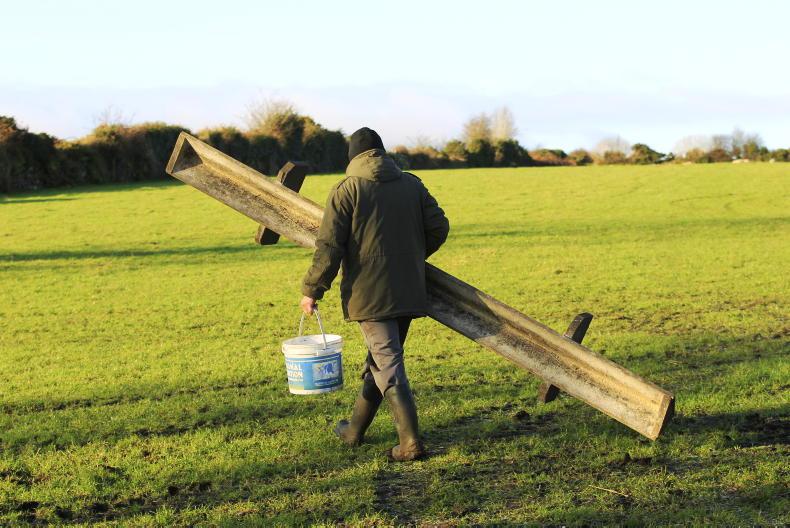Pressure on housing: Inclement weather is hitting at the worst possible time for flocks which are lambing.
Many flocks lambing earlier are often in a better position space wise to maintain ewes and lambs indoors during unsettled weather but with an unfavourable forecast, pressure will inevitably force farmers to turn animals outdoors.
Targeting letting the strongest ewes and lambs outdoors in small groups to the most sheltered areas will be the best option in the short term.
Animals should be let outdoors early in the morning to give the maximum length of time for ewes with young lambs to settle in to their new environment. Positioning feed troughs in the driest sheltered areas will also help.
Particular attention should be given to monitoring the direction of the prevailing wind.
Where ewes and lambs are being retained indoors for longer, it is vital to maintain high standards of hygiene to limit the risk of disease establishing.
Hypothermia in lambs: The risk of hypothermia is greatest in newborn lambs but young lambs under any nutritional stress or subject to the elements can also succumb.
This gives rise to the different types or severity of hypothermia seen.
Mild hypothermia occurs if a lamb’s temperature is between 37°C and 39°C and is usually linked to lambs being born into a cold environment or consuming insufficient colostrum to generate heat. Warming the lamb and ensuring it receives sufficient colostrum/milk will usually solve such issues.
If the temperature drops below 37°C then hypothermia is much more serious.
Treatment options are influenced by age and the severity of hypothermia.
If newborn lambs are still alert and able to suckle, then similar treatment as described above should suffice.
If, however, a lamb is too weak to suckle, irrespective of age, then feeding should be delayed.
The preferred treatment route is getting a rapid source of energy in to the lamb and this is best achieved by administering a glucose injection into the lamb’s abdominal cavity (stomach). Veterinary advice is to administer 10ml of a 20% glucose injection per kg bodyweight (50ml for a 5kg lamb).
Warm the solution to body temperature and, if diluting, add recently boiled water which has cooled or sterile water.
Administer 1in down and 1in out on the right-hand side of the lamb’s navel. Insert the needle downwards at a 45° angle to ensure the solution is injected in to the abdominal cavity and not the gut of the lamb. A lamb can then be warmed and it will typically respond to feeding thereafter.
Clean livestock policy: With ground conditions deteriorating significantly, it is not surprising that compliance issues with the clean livestock policy are being reported.
If possible, delaying presenting sheep with wet fleeces will provide factories with more scope to carry out remedial action.
Where in doubt, speak with your procurement agent as sheep classified as Category C sheep will be rejected from slaughter.
Footvax vaccine: The Footvax vaccine used to control lameness issues caused by footrot is experiencing disruption to normal supply.
The manufacturer of the vaccine, MSD Animal Health, hopes to have supplies back in stock in the Irish market in early March.
The supply issue is only related to the Irish market and supplies in Northern Ireland and Britain are said to be unaffected.






 This is a subscriber-only article
This is a subscriber-only article











SHARING OPTIONS: